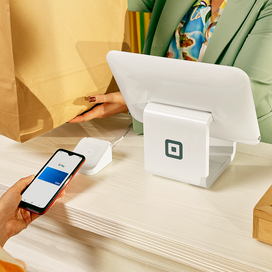Table of contents
This article is for educational purposes and does not constitute legal, financial, or tax advice. For specific advice applicable to your business, please contact a professional.
Discounting is a popular tool in the retail sales playbook, with 88% of shoppers saying they’ve used coupons for shopping. While discounts are loved by consumers, they are not always the best approach or even a profitable one for every retailer.
If you are positioning your business as a cost-saving brand, discounting can be a great way to convey that value and attract price-sensitive customers. Even then, indiscriminate discounting can hurt your profit margins and negatively impact brand perception. For example, consumers often perceive heavily discounted items as having a lower quality.
So, striking the right balance is crucial. If your goal is long-term profitability and attracting quality-conscious customers, you may want to take a more strategic approach to markdowns. In this article, we’ll discuss discounting strategies that protect your bottom line and pave the way for sustainable, profitable growth.
Why you need a better discount strategy
Without a doubt, discounting has its benefits. It can help clear out stock, boost sales volume, attract more customers, and give you a competitive edge. However, discounting without careful planning can cause the following problems:
- Erosion of profit margins: Discounts aren’t a one-way street to profit. They can slice through your profit margins, especially if not managed carefully.
- Perceived loss of product value: Too many discounts might send the wrong message. Customers might start thinking your products aren’t worth the original price, affecting your brand’s perceived value.
- Unrealistic customer expectations: Once you start offering discounts, customers might come to expect them regularly. It’s a slippery slope where your regular prices lose their weight.
- Stockpiling issues: Customers might wait for discounts instead of buying at regular prices, messing with your inventory management.
Overall, when it comes to discounts, you have to strike a balance between offering customers value through discounts and maintaining a positive brand perception.
How to develop a profitable discount strategy
If you want to offer discounts without the negatives, here are a few steps you can take.
1. Determine the discount objective.
Why are you running a discount? Do you want to hit a revenue target, sell off excess or old stock, attract new customers, or reward and retain your loyal customers? The discount objective will help shape your discount strategy and audience segmentation.
For example, if you need to reach a specific revenue target, you may consider offering tiered discounts based on spending thresholds. This encourages customers to spend more to unlock better deals, helping you reach your revenue target. If you have excess stock and need to move it quickly, a time-sensitive flash sale can drive a rapid sell-through of the excess inventory, preventing it from aging on the shelves.
2. Identify products/categories to discount.
Discounts can be thrilling, but they’re not a one-size-fits-all affair. Different products and categories will also have different sell-through rates based on popularity or pricing.
Here’s how to determine the best products or categories to discount:
- Sell-through rate: Products with low sell-through rates are prime candidates for discounts. With Square for Retail, you get detailed sell-through reports to help you make better stocking and discounting decisions.
- Age of products: The longer something sits on the shelf, the more likely it needs a little nudge in the form of a markdown, especially for products with a short shelf life.
- Seasonal considerations: Consider marking down products on the cusp of being out of season.
- Cost of holding inventory: If a product is taking up valuable shelf space and tying up capital, a strategic discount may be justified to clear it out.
3. Analyze profit margins to figure out what your discount should be
Once you’ve identified candidate products, decide if discounting is worth considering through the following steps:
- Determine the profit margins of selected products or categories.
- If the margins look good, set a tentative discount percentage.
- Determine the sales increase needed to offset the impact of the discount.
- If the required sales volume is unrealistic, adjust the discount percentage and repeat steps one through three until you arrive at a reasonable discount rate.
Here’s how this works out in practice.
Analyze your gross profit margins using the following equation:
Gross Profit Margin (%) = (Revenue – Cost of Goods Sold)/Revenue x 100
To determine the gross profit margin for a specific product or category, use the total revenue generated from that product or category and the associated cost of goods. Remember, cost of goods sold (COGS) includes all costs directly associated with producing or purchasing the product. It includes the cost of raw materials, labor, and manufacturing overhead but does not include your operating expenses, such as rent, utilities, salaries, and other overhead costs. The Square for Retail reporting feature provides detailed insight into your cost of goods sold, projected profit, sell-through rates, and more, so you can make these calculations faster and more accurately.
Keep in mind that profit margins vary across retail business sectors. Depending on the cost to hold slow-moving inventory or stock that may expire due to seasonality, you may be willing to take a lower or even 0% profit margin.
Once you’ve determined your gross profit margins, set a tentative discount percentage. High-margin items might withstand a deeper discount, while lower-margin products require more cautious pricing. Even relatively low markdown percentages can significantly affect your profit margins and sales targets.
Consider an item that sells for $100 with a 40% gross profit margin. That means the item costs $60 to purchase or produce, and your gross profit is $40. If you sell 100 units, your gross profit is $4,000. If you offer a 20% discount, you slash your profit by half because the new selling price becomes $80 — the item still costs $60, but your profit is now $20. If you sell the same number of units, you’d lose $2,000. So, you’ll need to sell more items for the discount to be worth it. But how many more? Since your gross profit per sale is now $20, you need to sell 100 additional units, or 200 units in total, to make the same gross profit of $4,000. That is, if your costs stay the same.
While the above example is simplified for illustrative purposes, it underscores the importance of understanding your gross margins for different products before embarking on a discounting spree. Below is a guide to help you understand how much you need to increase your sales at different discount percentages and gross profit margins.
|
Gross Profit Margin |
Discount Percentage |
||
|
5% |
10% |
15% |
|
|
0% |
150% |
||
|
15% |
50% |
200% |
|
|
20% |
33.3% |
100% |
300% |
|
25% |
25% |
67.7% |
105% |
|
30% |
20% |
50% |
100% |
|
35% |
16.7% |
40% |
75% |
|
40% |
14.3% |
33.3% |
60% |
The sales increase needed to counter the effect of discounts on your gross profit margin
Source: Business Victoria
From the table above, if your current gross profit margin is 20% and you offer a 15% discount, you’ll need to increase sales by 300% to maintain the same margin.
Based on your analysis, determine the discount percentage that makes sense for your objective. Keep in mind how many more sales you will need to make to maintain the same margins and decide if you can reach that target. For example, if historical sales data for a specific product shows that you’ve never hit that target, even at peak sales, it may be wise to lower your percentage to maintain a healthy margin.
Square Dashboard provides business intelligence tools and insightful sales reports that can help you confidently make discounting decisions.
7 discounting strategies that work to retailer’s advantage
Once you’ve figured out your discount objective and percentage, the next step is to implement the discount. Here are strategies that help you offer discounts profitably while keeping that positive brand vibe intact.
1. Loyalty-based discounts
Discounts often attract bargain hunters who simply want to grab a deal and go. To mitigate this, you can implement a tiered loyalty program where customers unlock higher discounts as they move up tiers. This encourages repeat business and rewards loyalty with more significant discounts, creating a win-win situation.
With Square Loyalty, you can set up your loyalty program in minutes and start rewarding customers. According to Square, customers enrolled in a Square loyalty program spend 53% more and visit 40% more often, which means more revenue for your business overall.
2. Bundle discounts
Instead of discounting individual items, explore bundling products to maintain perceived value while offering a deal. You can strategically price bundles to maintain or even increase profit margins, as the perceived value for customers often justifies a slightly higher total price. Plus, you can bundle slow-moving or less popular products with high-demand items, helping to clear inventory efficiently if that’s your goal.
You can easily create and manage bundles with the Square bundling feature. With Square built-in reporting, you can track inventory for bundled items, whether they are sold as a single product or as part of a bundle, giving you valuable insight into how products perform.
3. Minimum purchase discounts
Offer discounts for purchases above a certain threshold; for instance, “Get 15% off when you spend $200 or more.” This not only boosts average order value but ensures that discounts are tied to a substantial sale. If you offer a blanket discount of 10% off on all items without any purchase thresholds, customers get a discount irrespective of their total purchase value. But to offset the impact of discounts, as we’ve seen in the previous section, you need to sell more items. So, setting a purchase threshold that gets you closer to your target sales volume makes more sense. In addition, you can build stronger, more loyal customer relationships by offering ongoing discounts for meeting purchase thresholds.
4. Personalized discounts
Leverage customer data to offer personalized discounts based on past purchase behavior or preferences. This shows that you understand your customers and increases the likelihood of conversion.
Square offers a wide range of personalization tools, including Customer Directory and Square Marketing, that allow you to collect insights into customer purchase behavior and tailor campaigns to specific customer segments.
5. Seasonal discounts
Tying discounts to specific seasons or events allows you to strategically align discounts with natural buying patterns. Consumers often expect special deals during special seasons, so such discounts will not negatively impact your brand perception. In addition, since customers are already in shopping mode, you can take advantage of the increased sales volume to offset the impact of discounts on your profit margins.
For example, a clothing retailer may offer a “Summer Clearance Sale” with discounts on summer apparel. Shoppers are more inclined to buy summer clothing during this season, leading to increased sales volume as they take advantage of the discounted prices.
6. In-store only discounts
Offer discounts exclusively for purchases made at your physical retail location(s). In-store discounts drive customers to your physical store(s), increasing foot traffic and potentially attracting new customers who may explore other products. In-store purchases also eliminate the need for shipping, saving you the expenses associated with packaging, handling, and transportation.
Additionally, by encouraging customers to visit the physical store, you have the opportunity to create a positive and memorable in-store experience, fostering brand loyalty. For best results, time in-store discounts strategically to align with peak shopping periods or events.
7. Free shipping
Several studies have shown that free shipping is a strong incentive for many consumers. According to Statista, 73% of consumers say free shipping greatly impacts their decision to buy an item online. And they are willing to take several actions to qualify for free delivery, from buying more items to shopping in-store to joining a loyalty program.
You can use this information to your advantage in several ways. You can factor shipping costs into your overall pricing strategy to maintain profitability or tie free shipping to a minimum purchase, encouraging larger orders and boosting average transaction value. You can also offer free shipping as part of loyalty programs or subscription services to build long-term customer loyalty. With Websites, you can offer free shipping based on order weight, price, or all orders.
Discounts work. When implemented thoughtfully, discount strategies can drive sales and contribute positively to brand perception, creating a win-win for you and your customers. The key is to maintain a balance between customer incentives and overall profitability. When offering discounts, always keep an eye on your profit margins and ensure that discounts align with your financial goals.
![]()











